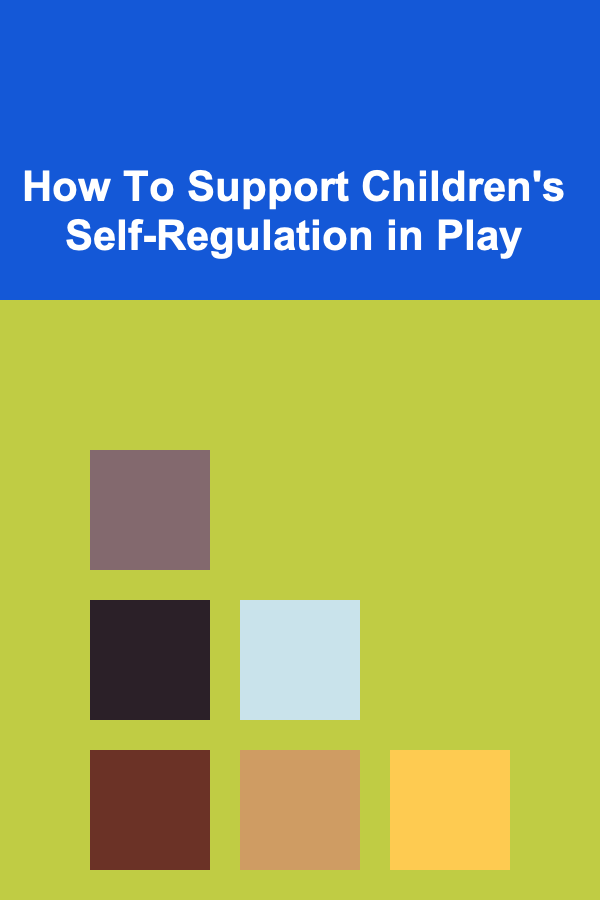
How to Budget for Baby's First Year Milestones
ebook include PDF & Audio bundle (Micro Guide)
$12.99$9.99
Limited Time Offer! Order within the next:
Not available at this time

Becoming a parent is one of the most joyful experiences in life, but it also comes with its fair share of financial responsibilities. From the moment your baby is born, your budget will need to adjust to accommodate new needs and milestones. Planning ahead and budgeting wisely will help you manage the costs of your baby's first year, ensuring that you're financially prepared for the journey ahead. In this article, we'll explore how to budget for your baby's first year milestones---from birth through their first birthday---while keeping your finances in check.
Preparing for Baby's Arrival
The months leading up to your baby's birth can be overwhelming, both emotionally and financially. There's a lot to buy, decisions to make, and health care costs to consider. The key to staying on track is planning well in advance.
A. Healthcare and Prenatal Costs
Before the baby arrives, you'll need to budget for prenatal care, which includes doctor's visits, ultrasounds, and any necessary tests. These costs can vary greatly depending on your insurance, location, and whether or not you're experiencing a high-risk pregnancy.
- Doctor's Visits: Regular check-ups and any additional visits can cost anywhere from $100 to $500 per visit, depending on your insurance and location.
- Ultrasounds and Tests: Typically, you'll have one or two ultrasounds during pregnancy, which could range from $100 to $1,000 if not fully covered by insurance.
- Maternity Care: Labor and delivery costs vary widely. For a vaginal delivery, you could expect to pay between $3,000 and $10,000 if you're uninsured or have a high-deductible insurance plan.
B. Baby Gear and Supplies
In preparation for the baby's arrival, you'll need a variety of items. Some are essential, while others are optional. Here's a breakdown of the basic gear you'll need:
- Crib and Mattress: Cribs range from $100 to $1,000, depending on the brand and quality. Mattresses typically cost between $50 and $200.
- Car Seat: A car seat is a must-have and can range from $50 for basic models to $500 for high-end brands.
- Stroller: A stroller can cost anywhere from $100 to $1,000. Consider whether you want a travel system (a combo stroller and car seat) or a stand-alone stroller.
- Clothing: Stocking up on baby clothes is essential. Expect to spend between $100 and $300 for the first few months. Babies grow quickly, so be mindful of buying too much for each size.
- Diapers and Wipes: Diapers are one of the biggest ongoing expenses in the first year. Expect to spend around $500 to $800 annually on diapers, depending on the brand and whether you choose disposable or cloth.
C. Insurance and Maternity Leave
Understanding your insurance plan and budgeting for maternity leave is critical. Your employer may offer paid maternity leave, but this isn't always the case. Additionally, if you plan on having the baby in a hospital, there may be out-of-pocket costs for procedures, anesthesia, or other hospital stays.
- Maternity Leave: In the U.S., maternity leave is not federally mandated, so it's essential to understand your employer's policy and whether your state offers any paid family leave.
- Health Insurance: Be sure to update your insurance with your baby's birth. This may involve extra costs if your plan doesn't fully cover maternity services or newborn care.
The First Three Months: Infant Care Essentials
During the first three months, the majority of expenses revolve around feeding, diapers, and basic care.
A. Feeding: Breastfeeding vs. Formula
Feeding your baby is one of the biggest expenses in the first few months. If you plan to breastfeed, you may have fewer costs, but there will still be some expenses related to breastfeeding supplies, such as:
- Breast Pumps: High-quality breast pumps can cost between $100 and $300. Many insurance plans will cover the cost of a breast pump, so be sure to check.
- Breastfeeding Accessories: You'll need supplies such as nursing bras, nipple creams, storage bags for breast milk, and bottles. This can cost an additional $50 to $150.
If you choose formula feeding, the costs can be higher:
- Formula: Formula can cost anywhere from $50 to $150 per month, depending on the brand and whether your baby has any special dietary needs.
B. Diapers and Wipes
Diapers are a significant ongoing cost in the first year. On average, babies go through 8 to 12 diapers per day, which adds up quickly. You can expect to spend about $1,000 to $1,500 on disposable diapers and wipes during the first year.
Alternatively, cloth diapers may reduce this cost but require an initial investment of $200 to $500 for the diapers, liners, and other related items.
C. Healthcare and Pediatric Visits
Your baby will need regular check-ups and vaccinations during the first few months. These visits can cost anywhere from $100 to $300 per visit, depending on your insurance and location.
- Pediatrician Visits: Most pediatricians will schedule check-ups at 1, 2, 4, 6, and 9 months during the first year.
- Vaccinations: Some vaccinations may not be fully covered by insurance and could result in additional costs.
D. Sleep Essentials
Newborns need to sleep a lot, and you'll want to ensure their sleep environment is safe and comfortable. You'll need a crib or bassinet, bedding, and possibly a white noise machine to help your baby sleep. The cost for these items can range from $150 to $500 or more, depending on what you choose.
The Next Three Months: Growth and Development
Between 3 and 6 months, your baby will start to grow more rapidly, and so will the associated costs.
A. Clothing
Your baby will continue to grow quickly during the first six months. This means you'll need to buy clothes frequently. You may spend an additional $200 to $400 on clothing during these months.
B. Baby Gear Upgrades
As your baby becomes more active, you may need to upgrade or add new baby gear:
- Baby Swing or Bouncer: These can range from $50 to $250 and can be a lifesaver for parents needing a break.
- High Chair: When your baby is ready for solid foods (around 6 months), you'll need a high chair. Expect to spend between $50 and $250.
C. Solid Food and Feeding Equipment
When your baby is ready for solids, the cost of feeding will increase. While baby food may seem like a minor expense, buying jars, pouches, and purees can add up. On average, parents can expect to spend between $200 and $400 on baby food in the second half of the first year.
You'll also need baby spoons, bowls, and sippy cups, which can add another $50 to $100 in costs.
D. Healthcare and Pediatric Visits
In addition to regular pediatric visits, you may need to budget for sick visits, especially if your baby contracts common illnesses during their first year.
The Final Three Months: Milestones and One-Year Celebrations
In the final quarter of your baby's first year, you'll be preparing for a number of new milestones.
A. First Birthday Party
Planning a first birthday party can be a fun but costly event. Depending on how elaborate you want the celebration to be, you could spend anywhere from $100 to $500 or more. Consider the costs of decorations, a cake, and potentially renting a venue.
B. Toys and Developmental Products
As your baby becomes more mobile and curious, you'll need to budget for toys and developmental products. These can range from simple toys like soft blocks ($10-$50) to more sophisticated items like educational toys or activity centers ($50-$150).
C. Healthcare and Milestone Checkups
Around 12 months, your baby will need their one-year checkup, which may include additional vaccinations. Ensure you have enough budgeted for this visit, which can range from $100 to $300.
Ongoing Expenses Beyond the First Year
After the first year, many of the ongoing costs you've encountered will continue, but there may be fewer big expenses. Diapers, food, and healthcare will continue to be your primary costs, but you'll likely face less need for frequent upgrades to baby gear or clothing.
Conclusion
The first year of parenthood can be expensive, but with careful planning and budgeting, you can manage these costs without feeling overwhelmed. By considering your healthcare expenses, baby gear, feeding costs, and developmental milestones, you'll be able to allocate your finances effectively. Keep in mind that every baby is different, and expenses can vary widely based on your choices and circumstances. Start planning early, track your spending, and adjust your budget as needed to ensure that you can enjoy each milestone without financial stress.

How to Make Your Rental Property Pet-Friendly Without Losing Value
Read More
How to Organize a DIY Craft Day for the Whole Family
Read More
How to Plan a Family Dance Party at Home
Read More
How to Style Your Furniture for Maximum Functionality
Read More
How to Use Mirrors to Enhance Space in Your Family Room
Read More
How To Support Children's Self-Regulation in Play
Read MoreOther Products

How to Make Your Rental Property Pet-Friendly Without Losing Value
Read More
How to Organize a DIY Craft Day for the Whole Family
Read More
How to Plan a Family Dance Party at Home
Read More
How to Style Your Furniture for Maximum Functionality
Read More
How to Use Mirrors to Enhance Space in Your Family Room
Read More